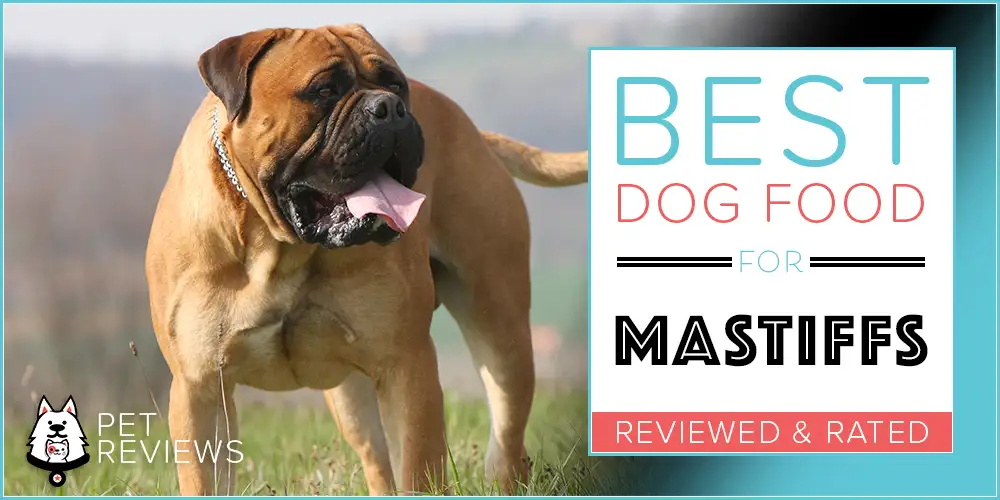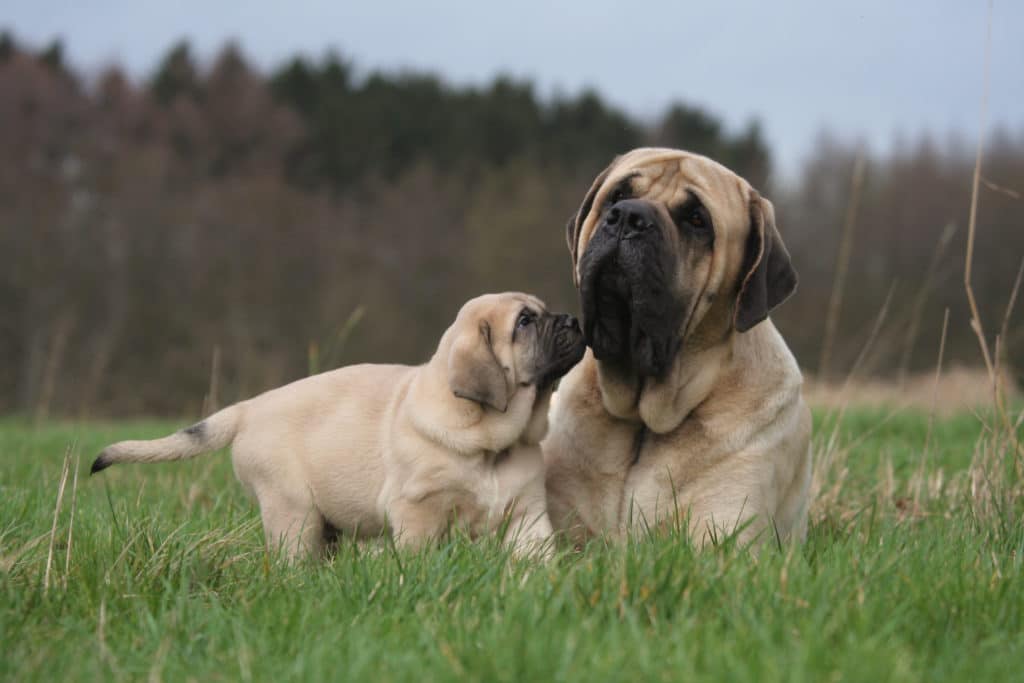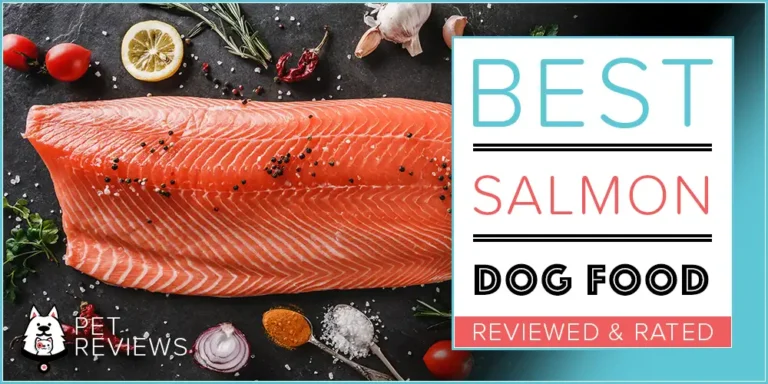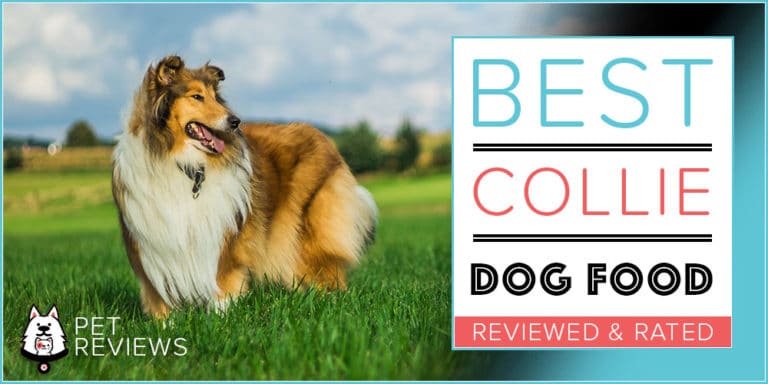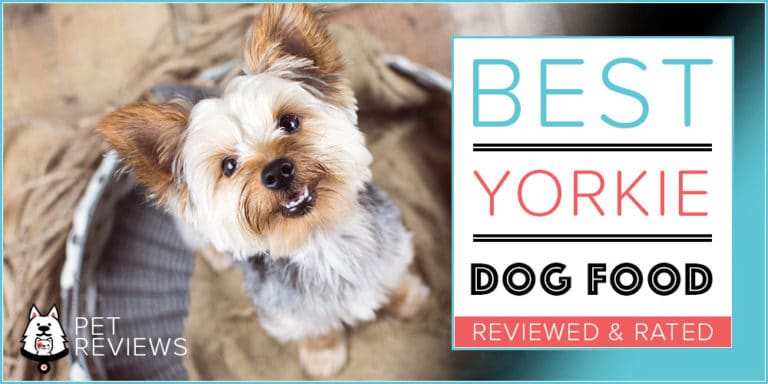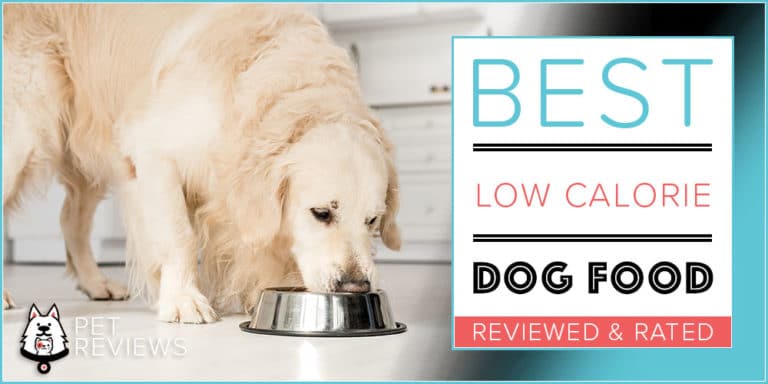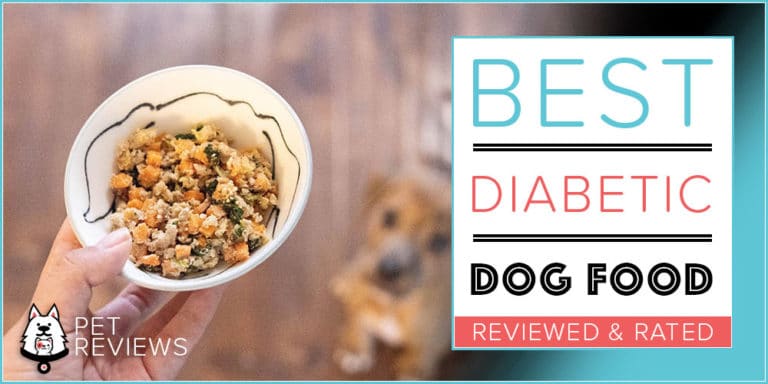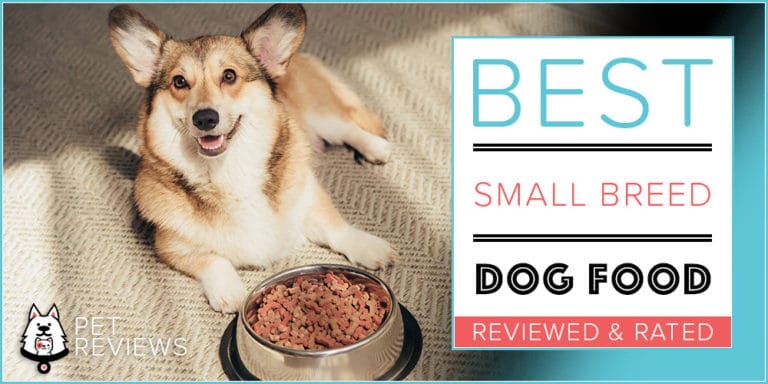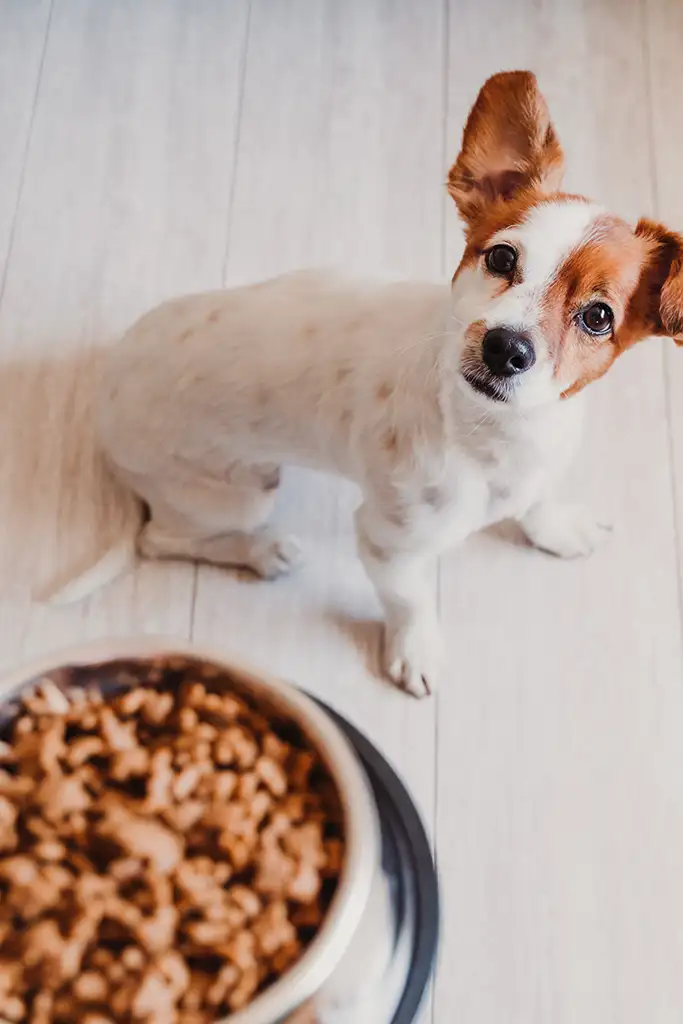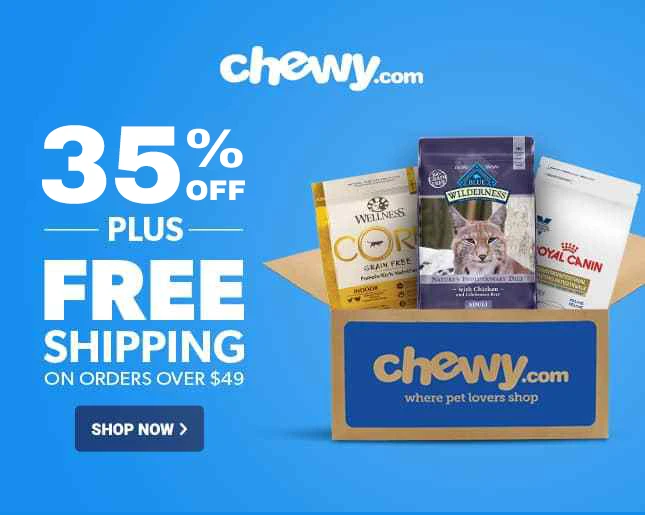What Is the Best Dog Food for Mastiffs? 2024 Reviews
Quick Guide
- What Is the Best Dog Food for a Mastiff?
- Mastiffs: Things You Should Know
- Mastiff Nutrition
- Medical Conditions and Diseases in Mastiffs
- How Often Should I Feed My Mastiff?
- Overall Best Dog Food for Mastiffs
- 10 More Top-Rated Dog Foods for Mastiffs
- Runner-Up – The Farmer’s Dog
- Most Budget-Friendly – Iams ProActive Health Large Breed Dog Food
- Best Portions – Ollie
- Highest Protein – American Journey Large Breed Recipes
- Best Giant Breed – Purina Pro Plan Large Breed Recipes
- Best Human Grade – Nom Nom
- Best Holistic – Taste of the Wild with Ancient Grains
- Best Adult Food – A Pup Above
- Best for Dietary Restrictions – Hill’s Science Diet Large Breed Dog Food
- Best All-Natural Kibble – Nutro Ultra Large Breed Dog Food
- Frequently Asked Questions
- Conclusion
Like any dog (especially large dogs), mastiffs do best with specialized diets to support their bones, muscles, and joints. While they tend to be couch potatoes that are happy to lay in the same sunny spot all day long, that doesn’t mean they don’t need specialized nutrition. Their sedentary, yet large nature means they need low-protein food that still has the necessary nutrients to promote healthy joints and digestion.
Unfortunately, picking the right food for your mastiff can be difficult for a variety of reasons, the first of which is the differences in nutritional needs between the various mastiff breeds. For example, the large, long-haired Tibetan Mastiff could benefit from dog food that will support its fluffy coat, while the gigantic and traditional English Mastiff needs more of an emphasis on bone and joint health.
Regardless of which mastiff you call your own, we’ll walk you through several of the best dog foods for mastiffs in this guide.
What Is the Best Dog Food for a Mastiff?
While your preferred dog food may differ slightly depending on which kind of mastiff you have, the foods we’ve picked out for this list should apply more or less across the board. Here’s a quick overview of our favorites.
- Our Top Pick: The Farmer’s Dog
- Runner-up: Blue Buffalo Life Protection Formula for Large Breed Dogs
- Most Budget-Friendly: Iams ProActive Health Large Breed Dog Food
- Best Portions: Ollie
- Highest Protein: American Journey Large Breed Recipes
- Best Skin and Coat: Purina Pro Plan Large Breed Recipes
- Best Human Grade: Nom Nom
- Best Holistic: Taste of the Wild with Ancient Grains
- Best Adult Food: A Pup Above
- Best for Dietary Restrictions: Hill’s Science Diet Large Breed Dog Food
- Best All-Natural Kibble: Nutro Ultra Large Breed Dog Food
Mastiffs: Things You Should Know
The AKC recognizes four different mastiff breeds: the English Mastiff (or Old English Mastiff, or just Mastiff), Bullmastiff, Tibetan Mastiff, and Neapolitan Mastiff. The smallest of these is the Tibetan Mastiff, which can weigh as little as 70 pounds, while the largest is the English Mastiff, which can regularly reach over 200 pounds. Believe it or not, the heaviest dog in the world (and also the longest from nose to tail) was an English Mastiff named Zorba. He was measured at 330 pounds and more than eight feet long!
Another fun fact about mastiffs is that the Neapolitan Mastiff currently holds the record for the largest litter of puppies ever born. There were so many that they had to be delivered via C-section! In total, the famous Neapolitan Mastiff, named Tia, gave birth to a whopping 24 puppies.
Clearly, mastiffs like to live large in every way. Like many giant-breed dogs, mastiffs are slow to mature. They can take as long as two years to reach their full size and weight. Proper nutrition during this growth process is extremely important because if they take in too few or too much of certain nutrients while they mature, it could lead to bone and muscle problems during adulthood.
Mastiff Nutrition
Mastiff nutritional requirements are similar to any other large breed dog. However, because mastiffs tend to be big, lovable couch potatoes rather than exercise fiends, you may want to reflect this in their diet, too.
The main thing to consider with mastiff nutrition is that they have very different needs as puppies as compared to adults. It’s extremely important to feed mastiff puppies a dedicated large or giant-breed puppy food for the first two years of their life, as this will give them the balanced nutrition they need to develop correctly as they grow.
However, once your mastiff reaches their full size, their diet should focus on giving the proper amounts of protein, fat, and other nutrients to maintain a healthy weight.
Protein
You might have noticed that many pet foods tend to advertise around 18-22% protein (in dry foods – wet food tends to be closer to 5%). While this is usually fine for adult dogs, giant breed puppies like mastiffs should consume kibble with a minimum of 30% protein (8% in wet foods). Not only is protein incredibly important for giving your puppy energy, but it gives them the power to grow big and strong, too.
Your mastiff’s protein needs will go down as they reach adulthood, but there are no detrimental effects to feeding them more protein as long as your mastiff exercises regularly. While 22% protein for your adult mastiff should be sufficient, 25% is an even safer bet.
Calcium and Phosphorus
Calcium and phosphorus are two of the most important minerals for your giant breed puppy to consume as they grow. However, this doesn’t mean you should feed them extra! Believe it or not, many giant breed puppies are unable to regulate the amount of calcium they absorb when they’re young, so excess nutrients can cause their bones to grow too quickly for their own health.
Your puppy should always receive a 1:1 – 1:3 ratio of calcium and phosphorus as they grow. This means you should be careful to check any treats they receive for these nutrients, as well, to make sure you’re not throwing this ratio out of whack. Similarly, your mastiff puppy’s diet should be about 1.5% calcium (dry).
However, calcium and phosphorus aren’t the only minerals that are important to your mastiff’s health. You should also keep an eye out for the following:
- Copper
- Manganese
- Vitamin A
- Vitamin D
- Zinc
The above minerals need to be a part of your growing mastiff’s diet, but like calcium and phosphorus, too much in excess can cause developmental issues.
Fat
Fat is the final nutrient that you should worry about in your mastiff’s food. Just like with humans, your mastiff needs healthy fats to maintain joint, skin, and hair health, but excess fats can contribute to both obesity and health problems.
While your mastiff only needs between 10-14% fat during its puppy years (3-4% in wet food diets), your mastiff can benefit from slightly more than that during its adult years.
Medical Conditions and Diseases in Mastiffs
Like any dog, mastiffs can fall prey to medical conditions that are closely related to what they eat. It’s extremely important for you to know these if you own a mastiff, as some of them can be deadly. We’ll walk you through them below.
DOD and Mastiff Puppy Nutrition
The reason why puppy nutrition is so important in giant breed dogs is because of a medical term called DOD, or Developmental Orthopedic Disease. DOD is not one disease, but several that stem from the same cause: improperly balanced nutrition in the growth stages of large and giant-breed dogs.
DOD can include many bone-related diseases like:
- Elbow and hip dysplasia, conditions where the hip or elbow grinds against or dislocates from its socket because of developmental issues
- Osteochondrosis, a condition that affects the cartilaginous areas in your dog’s bones
- Panosteitis, or “growing pains,” bone soreness that resolves when the dog reaches its full size
- Hypertrophic Osteodystrophy, a condition that can cause bone inflammation, necrosis, or failed bone development in your dog’s joints
The goal is to supply your mastiff puppy with precise amounts of the nutrients it needs – as close to ideal numbers as possible. Too much nutrition can cause your puppy’s bones to grow too fast or develop incorrectly, while too little can cause them to grow too slowly (and also result in malformations).
How is mastiff puppy food different from food designed for smaller dogs? The main difference is that giant breed puppy food usually has lower levels of a few key nutrients. The four nutrients you should be aware of are fat, vitamin D, phosphorus, and calcium. Obviously, protein can play a role as well.
It’s also important not to let your mastiff puppy overeat! Not only is obesity a big problem for large and giant breed dogs, but overeating can upset their delicate nutritional balance. Not only that, but giant breed dogs, especially those with deep chests like mastiffs, are prone to a deadly medical condition called bloat.
Bloat: How You Can Protect Your Mastiff
Bloat is a sudden and devastating medical condition that can affect all dogs, but it’s more common in large breeds. While bloat can sometimes happen out of the blue without any visible cause, some things can increase your mastiff’s likelihood of developing the condition.
Before we go over those things, though, what exactly is bloat? As the name suggests, bloat, or gastric volvulus, is a condition where your dog’s stomach fills up more than normal. Not only can this cause your dog pain, but if it progresses too far, it can put pressure on your dog’s other organs, such as their heart and lungs. In extreme cases, it can even tear the stomach.
Obviously, this is dangerous because it can impact your dog’s ability to breathe properly. However, it can also put pressure on your dog’s heart and impair blood flow.
Sometimes, your dog’s stomach can invert itself during bloat, and when this happens, the only way to fix it is with surgery. All forms of bloat require immediate medical attention for your dog, as it can become deadly extremely quickly.
Some things can increase your dog’s chances of developing bloat. Some of these include:
- Raised food bowls
- Running or playing within an hour after a meal
- Eating too fast
- Large meals
- Overeating or over-drinking
- Stress
- A family history of developing bloat
Fortunately, for each of the risk factors above, there’s a corresponding thing (or multiple things) you can do to combat them. For example, if you currently use raised food bowls to feed your mastiff, you should consider transitioning away from them. Letting your dogs rest for an hour after each meal is easy to do, too.
If you have a mastiff that eats too fast, slow-eating bowls can be a great solution. These dishes have ridges or other blockages to force your mastiff to take small bites. Giving your mastiff more small meals instead of a few large meals can help them slow down, too.
Fortunately, mastiffs are usually calm, gentle giants. If they are under any stress, it’s usually due to a resolvable external factor. However, if your mastiff is naturally anxious enough to put them at risk, you may want to consider asking your vet if they can provide a remedy.
And finally, while there’s nothing you can do to mitigate a history of bloat in your dog’s bloodline, vigilance, and preemptive action will help you immensely. If you know your dog is more likely to develop the condition, you’ll be better prepared to combat it (and more watchful of the warning signs, as well).
Obesity in Mastiffs: Prevention Is Key
While your mastiff’s risk of obesity varies slightly by breed, as we mentioned before, obesity can cause significant health problems in any breed of dog, especially large ones. Unfortunately, obesity tends to commonly aggravate any bone and joint problems that your mastiff may have.
Think about it this way: If your mastiff puts on weight, that weight will put more stress on their bones and joints when they walk or run. This can compound over time, so the best way to combat this is to get your mastiff back to a healthy weight.
What are the keys to keeping your pup at a healthy weight? Well, for one, feeding them a balanced, nutritious source of food is vital. The amount of food they eat, no matter how exceptional, is important, too. And finally, exercise can help them shed any extra weight.
The one exception is with mastiffs that have a preexisting condition or a required medication that can contribute to weight gain. If your mastiff is subject to either of these, you may need to be extra vigilant about keeping them in check.
Dilated Cardiomyopathy: Is It Worth the Risk?
One last thing to consider when choosing a food for your dog is the recent discovery of links between exotic pet foods and a disease called dilated cardiomyopathy. While DCM on its own is not fatal, it can lead to heart failure if it’s allowed to progress.
DCM is important because it’s more common in large-breed dogs with larger hearts, such as mastiffs. In recent years, DCM has been tentatively linked to “boutique” and grain-free dog food diets. While veterinary scientists and researchers are still investigating the link between DCM and special diets, it’s worth noting that a grain-free or exotic food diet could put your mastiff at higher risk than it is already.
While there’s no way to guarantee that staying away from these diets will prevent your dog from acquiring the disease (or whether putting your dog on one of these diets will put them at higher risk in the first place), it’s something you should consider carefully before moving forward.
Raw Food Diets and Home-Cooked Dog Food
Raw dog food diets and homemade dog food has become one of the newest trends among dog owners who wish to feed their mastiffs the best possible diet. While home and raw food diets can be incredibly good for your pet – especially for those with allergies, sensitive stomachs, or other medical problems – it should only be attempted with the help of your veterinarian or a veterinary nutritionist.
The thing is, homemade pet food diets need to be very carefully crafted to make sure your mastiff is getting the correct ratios of the nutrients it needs. If you don’t get these ratios correct, your mastiff could end up with developmental or growth issues, as well as many other medical risks, such as those coming from contaminated raw food.
That being said, there is absolutely nothing wrong with raw or human-grade diets for your pet. In fact, they can be very healthy for your mastiff friend if done properly. The important thing is to conduct the diet correctly, or you could inflict unintentional suffering on your pooch.
If you want all the benefits of a raw or human-grade diet for your pet, but you don’t have the time, energy, or money to work one-on-one with a veterinarian, fear not. We’ll look into several mail-order dog food brands in this guide that will send you proven diets for your mastiff for much less work.
How Often Should I Feed My Mastiff?
The amount of food you should feed your Mastiff depends on their age. Because puppy and adult dogs have different nutritional requirements, this can vary. Generally, a puppy can be fed up to 4 times per day, considering it requires a higher protein and energy intake as it develops.
Meanwhile, an adult Mastiff can eat roughly 1.2 kg or 2.6 lbs of food per day. Don’t rush to give this all to your pooch at once, though! Be sure to divide this amount into at least two meals throughout the day to assure that you’re not overfeeding your pup all at once.
Overall Best Dog Food for Mastiffs
| Our 2024 Picks: Best Mastiff Dog Food | |||
Blue Buffalo Life Protection Formula for Large Breed Dogs
|
CHECK PRICE | ||
The Farmer’s Dog
|
CHECK PRICE | ||
Iams ProActive Health Large Breed Dog Food
|
CHECK PRICE | ||
Ollie
|
CHECK PRICE | ||
American Journey Large Breed Recipes
|
CHECK PRICE | ||
Purina Pro Plan Large Breed Recipes
|
CHECK PRICE | ||
Nom Nom
|
CHECK PRICE | ||
Taste of the Wild with Ancient Grains
|
CHECK PRICE | ||
A Pup Above
|
CHECK PRICE | ||
Hill’s Science Diet Large Breed Dog Food
|
CHECK PRICE | ||
Nutro Ultra Large Breed Dog Food
|
CHECK PRICE | ||
Now that you have some background on the nutritional requirements of mastiffs, let’s walk through the best mastiff foods on the market today.
Our Top Pick – Blue Buffalo Life Protection Formula for Large Breed Dogs
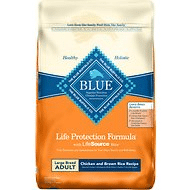
Some key features of Blue Buffalo’s Life Protection Formula for Large Dogs are:
- Three life stages for large dogs: puppy, adult, and senior
- Grain-free or grain-inclusive (depending on formulation)
- Several dry kibble flavors and formulations
It’s not hard to see why Blue Buffalo made it to the top of our list. If you have a pet, whether it be a dog or a cat, you’ve probably heard of Blue Buffalo. They were one of the first popular brands to offer natural, holistic pet foods – you could even argue that they helped start the trend.
Popularity aside, though, the reason why they’re our number one is a combination of two things: the brand’s flexibility, and their commitment to large breed nutrition. Not only does Blue Buffalo hit all of a mastiff’s nutritional needs, but Blue Buffalo comes in multiple flavors, formulas, and life stages, too.
Pros:
- High-quality ingredients you know and love
- Nutritional percentages are ideal for mastiffs
- Choose the formula that you (and your dog) like best
Cons:
- Expensive across the board (though not as expensive as wet food)
10 More Top-Rated Dog Foods for Mastiffs
Is our number one pick not doing it for you? If so, check out the other top-rated finds we’ve included below:
Runner-Up – The Farmer’s Dog
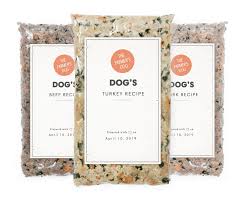
Key features of The Farmer’s Dog include:
- Four wet formulations: turkey, beef, chicken, and pork
- Custom portion sizes for your pet, delivered by mail
The Farmer’s Dog almost made it to the number one spot on our list – that’s how awesome they are. They create all human-grade food that they package in single-day pouches to make portion control a breeze. That and its lean formula make it a great choice for mastiffs that need to do a bit of weight loss!
While The Farmer’s Dog is approved for all life stages, including large breed puppies, they don’t have any formulations made specifically for puppies, which is the reason why they’re the runner-up on this list.
Pros:
- Great for weight loss
- Comes pre-portioned and ready to serve – just open
- Highly palatable
Cons:
- Expensive
- Approved for large-breeds, but doesn’t offer a large-breed formula
Most Budget-Friendly – Iams ProActive Health Large Breed Dog Food
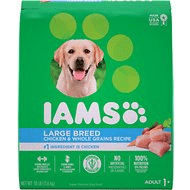
Key features of the Iams ProActive Health Large Breed Dog Food include:
- Large dog dry kibble available in three life stages: puppy, adult, and mature adult (seven years and older)
- Available in a “healthy weight” option
- Inexpensive, but with ideal nutrient balance
With the way that holistic pet foods have started to explode across the market, sometimes we forget that some of the less-showy options on the market today are just as good. Iams, in particular, is a standout example of this, with several perfectly-balanced formulations specifically designed for large breeds like mastiffs.
While the ingredient list on this kibble isn’t as all-natural as some of the others, it’s not by any means the worst, either. For nearly half of many of the other brands on this list, this food should really be on your list of choices to consider.
Pros:
- Excellent nutritional balance
- Low price
- Covers all life stages, plus a healthy weight option
Cons:
- Only available in chicken flavor
Best Portions – Ollie
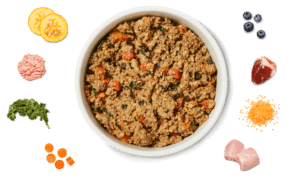
Some key features of Ollie include:
- Precise portions based on breed, age, and size
- Human-grade wet food, delivered to your door
- Chicken, turkey, lamb, and beef recipes
Ollie is our runner-up when it comes to human-grade mail-order diets, but from a functional perspective, it’s nearly identical to The Farmer’s Dog. Ollie does offer slightly different recipes at a slightly lower price than the former. We do like that Ollie offers sensitive stomach and weight loss options, too.
However, Ollie is slightly harder to portion out than The Farmer’s Dog – instead of squeezable packets, Ollie sends trays that you portion out with a special scoop. While this might be more precise, it tends to be messier, too.
Pros:
- Precise portion sizing
- Several diet options
- Cheaper than The Farmer’s Dog
Cons:
- Messy
- Approved for large breeds, but doesn’t offer a large-breed formula
Highest Protein – American Journey Large Breed Recipes
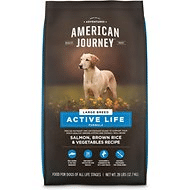
The key points of American Journey’s Large Breed Recipes are:
- Grain-free or grain-inclusive kibble
- High-protein, limited-ingredient formulations
- Designed for large dogs
If you want to provide your mastiff with a nutritious, high-protein diet, then look no further than American Journey. This Chewy.com company offers five large dog recipes: two grain-free for adults, two grain-inclusive for adults, and one grain-free for puppies. It would be nice if they offered a grain-inclusive option for puppies, but this is still a good selection.
Pros:
- High-quality ingredients
- High-protein formulas
Cons:
- No grain-inclusive puppy option
- Calcium and phosphorus are a bit high in some formulas
Best Giant Breed – Purina Pro Plan Large Breed Recipes
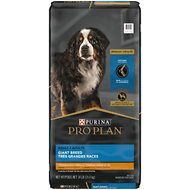
The key features of Purina Pro Plan Large Breed Recipes are:
- Three life stages: puppy, adult, and adult 7+
- High-quality dry kibble that’s also appropriate for weight control
Purina has been a consistent producer of high-quality kibble for many years, and their Pro Plan line has always exceeded expectations. In this case, Purina Pro Plan is the only brand to release a true “giant breed” option on this list. While mastiffs can thrive on both large breed and giant breed formulas, it’s nice to see one specifically designed for oversized dogs!
Pros:
- Only true “giant breed” food option
- Perfectly balanced for mastiffs and other giant breeds
- Contains added fatty acids for coat, joint, and skin health
Cons:
- Only available in chicken and rice flavor
Best Human Grade – Nom Nom
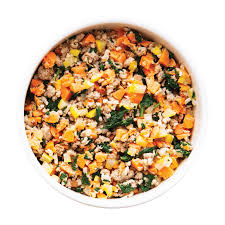
The key features of Nom Nom are:
- Human-grade wet food in beef, turkey, pork, or chicken
- High-protein formulations
Nom Nom is similar to the other human-grade pet-food-by-mail options we’ve looked at so far, but the quality of Nom Nom seems to go slightly past the previous options. In fact, Nom Nom encourages you to try some of your pooch’s food yourself – it’s just that good!
Unfortunately, while Nom Nom looks delicious, it comes with a price tag to match – nearly double what The Farmer’s Dog and Ollie cost.
Pros:
- Nutritious, human-grade food that’s suitable for weight loss
- Superior quality (you can even eat it yourself!)
Cons:
- Approved for large dogs and puppies, but no large dog formulations available
- Very expensive
Best Holistic – Taste of the Wild with Ancient Grains
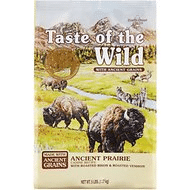
The key features of Taste of the Wild with Ancient Grains are:
- Natural, high-quality, holistic dry kibble with exotic ingredients
- Several formulations and flavors, including grain-free and grain-inclusive
Taste of the Wild is one of the most well-known true holistic dog food brands on the market today. Their dog food stands out because of its unique formulations, such as smoked salmon with quinoa, sorghum, and millet. If you’re looking for something exotic to spice up your dog’s diet but still provide good nutrition, then this is a good place to look.
Pros:
- Natural, holistic food with high-quality ingredients
- Several appealing flavors and formula options
Cons:
- Approved for large breeds, but no large breed formulations available
- Expensive for a dry kibble
Best Adult Food – A Pup Above
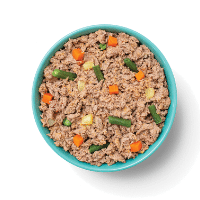
The key features of A Pup Above are:
- Natural, human-grade wet feed available in beef, turkey, chicken, and pork
- Very high-protein formulations
A Pup Above differs slightly from the other mail-order prepared foods that we’ve looked at so far. While none of them offer an option exclusively for large dogs, A Pup Above is not approved for large breed puppies at all – only adults.
However, with that being said, if you need a high-protein diet for your pup, A Pup Above offers very high-protein formulations for significantly less than Nom Nom. However, do be aware that A Pup Above ships in either three-pound or seven-pound resealable bags, not single-day pouches or trays.
Pros:
- High-protein human-grade feed
- Ships in bulk to save space in your refrigerator
Cons:
- No options for large breed puppies
- Cheaper than Nom Nom, but still expensive
Best for Dietary Restrictions – Hill’s Science Diet Large Breed Dog Food
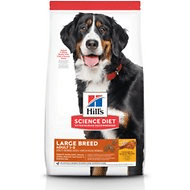
The key features of Hill’s Science Diet Large Breed Dog Food are:
- Limited-ingredient veterinary diets designed for dogs with medical conditions
- Available in a dry and wet kibble (large dog formulas are only dry kibble)
- Comes in puppy, adult, and adult 6+ varieties
If you’ve ever had your vet recommend a specific dog food to help your pup with a medical condition, the chances are you may have heard of Hill’s Science Diet. This brand specializes in high-quality foods that the vets themselves use for their pets. Some of the options you might see from them are “sensitive stomach” and “healthy mobility” varieties, but as you might expect, Hill’s is expensive for a dry dog kibble.
Pros:
- Formulated for pets with medical conditions, such as joint pain or sensitive stomachs
- Limited-ingredient diets are great for allergic dogs
- Designed for large breeds
Cons:
- Expensive
- Limited flavor options
Best All-Natural Kibble – Nutro Ultra Large Breed Dog Food
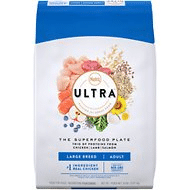
The key features of Nutro Ultra Large Breed Dog Food are:
- Ultra-clean, natural dog food with no GMOs, artificial colors, artificial flavors, or preservatives
- Available in large breed puppy and large breed adult
Normally, if you want to get a truly all-natural kibble, you have to buy expensive prepared food. However, that’s not the case with this kibble, which is full of superfoods, premium proteins, and natural, traceable ingredients that are good for both your dog and the environment. As you might expect, it’s a bit pricey, but you can rest assured that your mastiff will be eating the cleanest dry kibble on the market.
Pros:
- Environmentally-friendly, clean, and natural
- Nutritionally balanced for mastiffs and other large breeds, even puppies
Cons:
- Pricey
- Only one flavor option.4
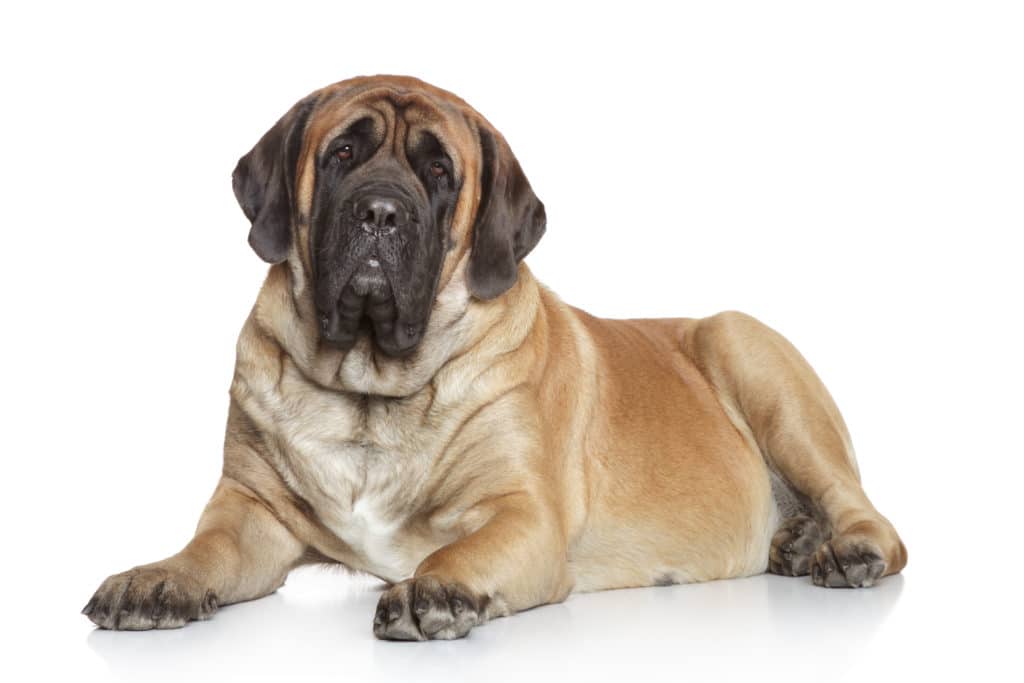
Frequently Asked Questions
We’ll finish up this guide with a few questions about mastiffs, what foods are best for them, and large breed nutritional requirements in general. If you still have questions that we didn’t answer up above, we may be able to resolve them here!
Does My Mastiff Need Large Breed Dog Food?
If you’ve been reading this article closely, then you should know the answer to this question is a resounding yes! Large breed dogs have significantly different nutritional requirements than small breed dogs, and the most reliable way to accomplish this is by going with food intended for large dogs. While some dog foods will say that they fulfill nutritional requirements for all dog sizes, these are typically not as well-balanced for large dogs as those specifically made for them.
Is Fresh or Dry Food Better for My Mastiff?
While both fresh and dry foods can be nutritionally balanced for your mastiff, keep in mind that each food type has its own benefits and drawbacks. For example, while wet food is often more palatable for dogs, dry dog food is thought to have better effects on your dog’s teeth in certain cases. However, any dog food can result in tooth decay (and bad breath) if you don’t keep up with regular teeth cleanings for your pup!
Does My Mastiff Need a Limited-Ingredient Diet?
Limited-ingredient diets, or LIDs, started as a dietary solution for dogs with food allergies. However, LIDs have emerged as a popular natural dog food choice in recent years because they’re seen as cleaner and more natural. Despite this belief, though, while LIDs might look appealing, they don’t offer any proven advantage over normal formulations unless your mastiff has the aforementioned allergies.
Conclusion
Mastiff owners should be intimately familiar with their gentle giants’ nutritional needs. After all, mastiffs are a bit of a walking contradiction – while they’re large, muscular dogs, they prefer to spend all day relaxing in the sun rather than exercising outdoors!
Fortunately, with so many large-breed-friendly food options out there today, your decision is easier to make than ever. We’ve chosen Blue Buffalo’s Life Protection Formula for Large Dogs for its well-balanced formula, its reliability, and its holistic approach. We hope that this list has helped you find your new favorite food for your mastiff friend, too, but regardless of which you choose, we’re sure your pooch will be happy!

